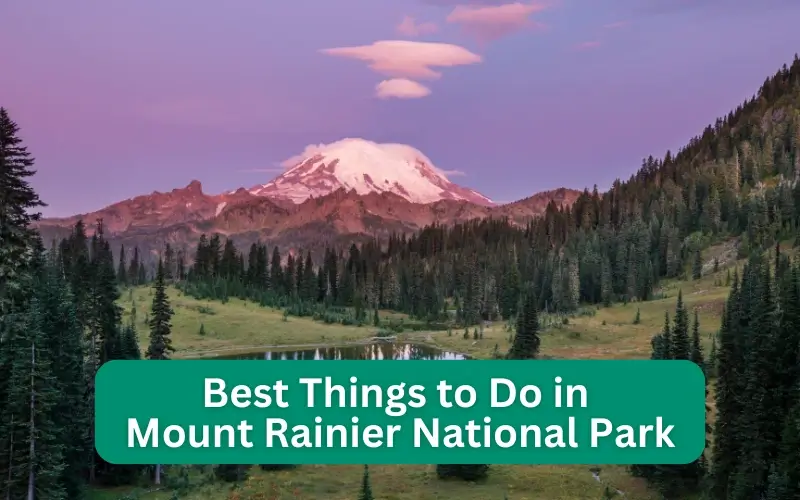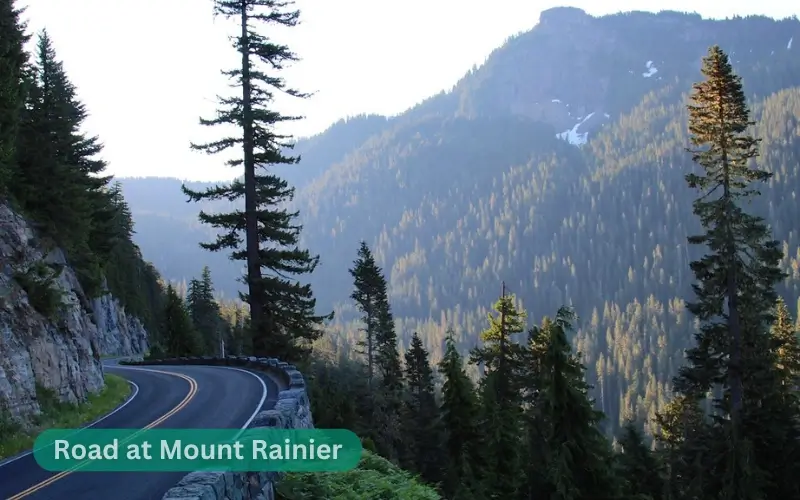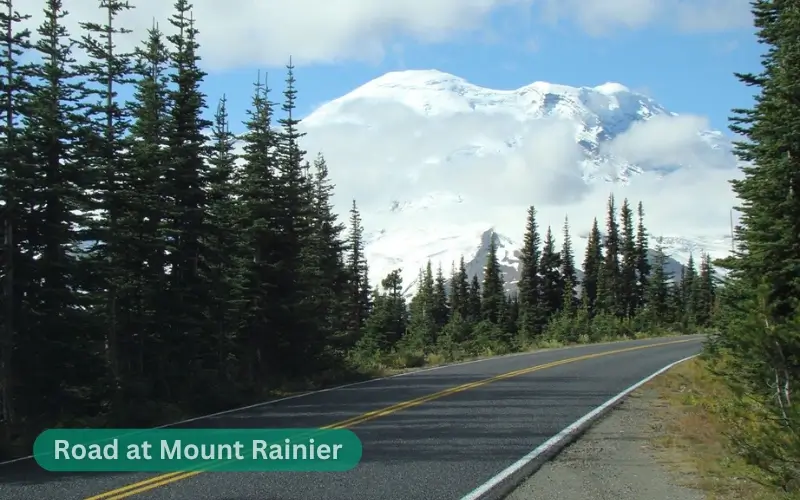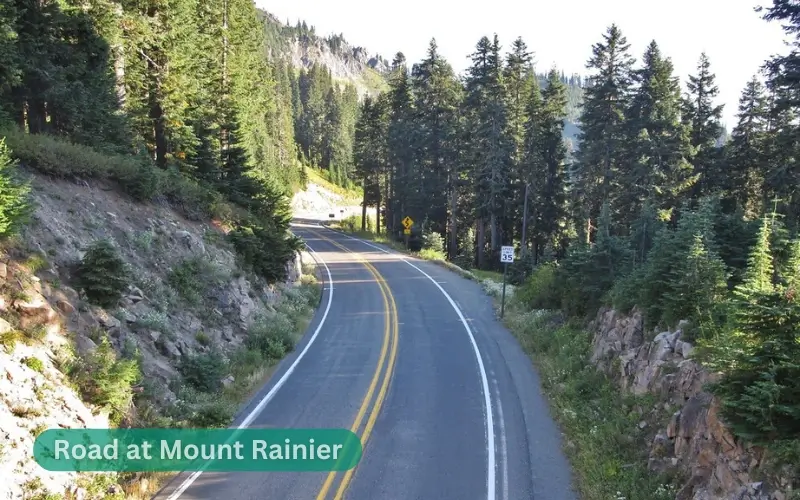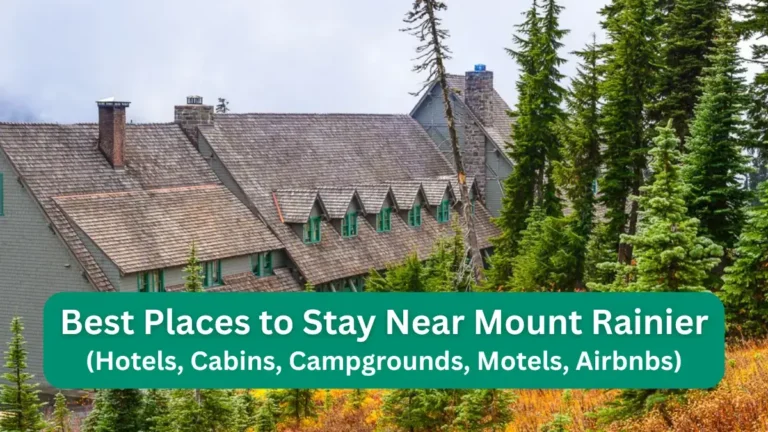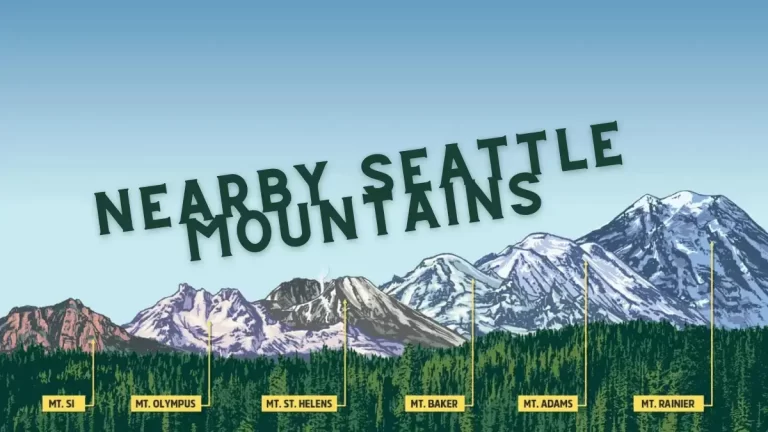This guide covers the top 13+ best things to do in Mount Rainier National Park. You’ll also learn about the weather, activities for first-timers, and options for families with kids. I’ll highlight the best sights in the park and answer common questions from first-time visitors and hikers. You can skip other things and jump to the activities in Mount Rainier here.
Things to Know Before Visiting Mount Rainier National Park
Mount Rainier National Park Tickets
Skip the hassle of planning and driving
Book this tour from Seattle for a relaxing, guided Mount Rainier experience. It takes you to the park’s top sights with expert commentary and convenient transportation. For more options, you can explore the best day trips from Mt. Rainier from Seattle.
Quick History of Mount Rainier National Park
Mount Rainier National Park was made on March 2, 1899, to protect the big volcano, its large ice sheets, and nearby forests. It is the fifth national park in the US and the first national park where cars were allowed. People who cared about nature, scientists, climbers, and local companies joined forces for a long time to keep it safe. Making this park was an important move in saving the natural wonders of the Pacific Northwest.

When to Visit the Park?
The best time to visit Mount Rainier National Park is July through mid-September. During this period, the weather is generally dry and warm, making it ideal for hiking and exploring the park’s trails. Wildflowers are also in full bloom during this time, particularly in the Paradise and Sunrise.
What to Do at Mount Rainier National Park (for First Timers)?
Mount Rainier offers many activities for every visitor, such as hiking, scenic drives, stargazing, enjoying wildflowers, and visiting waterfalls. You can hike trails like the Skyline Trail, explore Paradise and Sunrise regions, and witness waterfalls like Narada Falls.
Camp at one of the park’s three drive-in campgrounds or explore scenic waterfalls and lakes. And consider volunteering to help preserve Mount Rainier National Park. These are just family-friendly things to do in Mount Rainier National Park.
But if you want something more adventurous, do climb Mount Rainier or explore the Wonderland Trail.
Things to do at Mt Rainier in Winter include recreational options like snowshoeing and skiing. Discover vibrant wildflowers in the warmer months, go bicycling on designated paths, or fish and boat in select rivers and lakes. Don’t miss ranger-led programs that enrich your experience.

What to Do at Mount Rainier With Kids?
The best Mount Rainier things to do with family include easy hikes like the Grove of the Patriarchs. Kids will love seeing giant, ancient trees on a flat trail. Paradise has fun ranger programs with hands-on activities. Narada Falls and Reflection Lakes are also great spots for little ones to explore.
In winter, sledding and snowshoeing are perfect for kids. Families can also enjoy scenic train rides with steam engines. On rainy days, cabins offer board games and crafts.
Best Places to Visit in Mount Rainier National Park
These are some unmissable places to visit in Mount Rainier National Park:
- Paradise (For colorful wildflowers, visitor center, and easy hikes)
- Sunrise (The subalpine zone for panoramic views of Mount Rainier)
- Skyline Trail (Stunning views, with options from short to long hikes)
- Emmons Moraine Trail (Hike to the Emmons Glacier)
- Narada Falls (A short, easy hike to see Narada Falls)
- Reflection Lakes (For a serene spot to enjoy the mountain’s reflections)
- Longmire (known for its low-elevation hiking and historic buildings)
- Carbon River (the temperate rain forests of the Carbon River area)
- Ohanapecosh (old-growth forests and waterfalls at Ohanapecosh)
- Grove of the Patriarchs (old-growth forest for a unique walking experience)
13+ Best Things to Do in Mount Rainier National Park
- Things to do in Mount Rainier in one day are visiting Paradise and Sunrise regions.
- With kids on Mount Rainier, you can go on easy hikes like the Grove of the Patriarchs, join ranger programs to learn about nature, visit Narada Falls and Reflection Lake for beautiful views, and explore the visitor centers for fun educational exhibits.
- In winter in Mount Rainier, you can go snowshoeing on groomed trails, enjoy cross-country skiing in the Paradise area, and take scenic drives to see snowy landscapes and frozen waterfalls.
- In summer in Mount Rainier, you can hike wildflower-filled trails like Skyline and Spray Park, go camping in the park’s campgrounds, and attend ranger-led programs about wildlife and geology.
- In fall in Mount Rainier, you can enjoy colorful autumn foliage, go on quiet hikes to spot wildlife preparing for winter, and take scenic drives to see changing leaves and crisp mountain air.
- In spring in Mount Rainier, you can watch wildflowers begin to bloom, see rushing waterfalls fed by melting snow, and spot baby animals like marmots and deer starting to explore.
- In January and February in Mount Rainier, you can try snowshoeing on easy trails, attend winter ranger talks, and enjoy peaceful snowy scenery away from summer crowds.
- In March in Mount Rainier, you can explore early spring snowshoe routes, watch for signs of wildlife waking up, and visit the visitor centers to learn about the park’s winter ecology.
- In April in Mount Rainier, you can hike lower-elevation trails as snow melts, see waterfalls at their fullest from spring runoff, and enjoy fewer crowds while spotting early wildflowers.
- In May in Mount Rainier, you can hike popular trails as more paths open, enjoy blooming wildflowers in meadows, and take part in guided nature walks and photography workshops.
- In June, July, and August in Mount Rainier, you can hike high-elevation trails with stunning views, camp under starry skies, and attend daily ranger programs and evening talks.
- In September in Mount Rainier, you can enjoy cooler weather for hiking, see fall colors starting to appear, and take part in harvest festivals and cultural events in nearby towns.
- In October in Mount Rainier, you can explore quiet trails with colorful leaves, photograph early snow on mountain peaks, and visit local museums and visitor centers before winter sets in.
- In November in Mount Rainier, you can enjoy peaceful walks in lower areas, spot wildlife preparing for winter, and take scenic drives to see the changing landscape before snow covers the park.
- In December in Mount Rainier, you can experience holiday events at the park, try winter sports like snowshoeing and skiing, and enjoy cozy evenings by fireplaces in nearby lodges.
1/ Hike the Legendary Skyline Trail (Paradise)
- Distance: 5.5 miles with 1,700 feet elevation gain
- Best time to visit: Mid-July through September
- Trail difficulty: Moderate to hard loop trail
- Start early: Begin by 7am to avoid crowds
The Skyline Trail is one of the best hikes in Mount Rainier National Park. It gives great rewards for your effort. This beautiful loop goes through colorful wildflower meadows. These flowers bloom in bright colors during the summer.
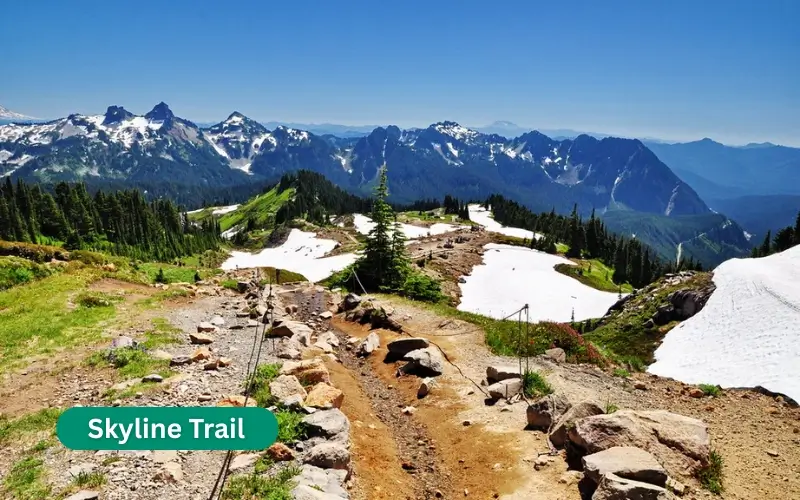
Mount Rainier, a tall mountain, stands out in the sky. You will walk through high mountain areas where you can see marmots and mountain goats. Along the way, you will enjoy wide views of the Tatoosh Range, Mount St. Helens, and Mount Adams.
The best part of the trail is Myrtle Falls. Here, water falls down in front of Mount Rainier’s snowy peak. This mix of different views and nature in just six miles is why many people choose this trail when visiting Mount Rainier.
2/ Experience the Historic Paradise Inn
- Built in 1916: National Historic Landmark status
- Rustic architecture: Classic national park lodge design
- Dining experience: Restaurant with mountain views
- Seasonal operation: Typically May through October
Paradise Inn is a historic lodge in Mount Rainier National Park. It was built in 1916 using local wood and stone. The large wooden beams, stone fireplaces, and big windows give it a classic mountain look. The windows frame beautiful views of Mount Rainier.
Paradise Inn is one of the best places to stay near Mount Rainier if you want to explore the park for several days. The dining room is a lively spot where hikers and visitors eat together and share stories. You can enjoy mountain views while you eat, making meals special.
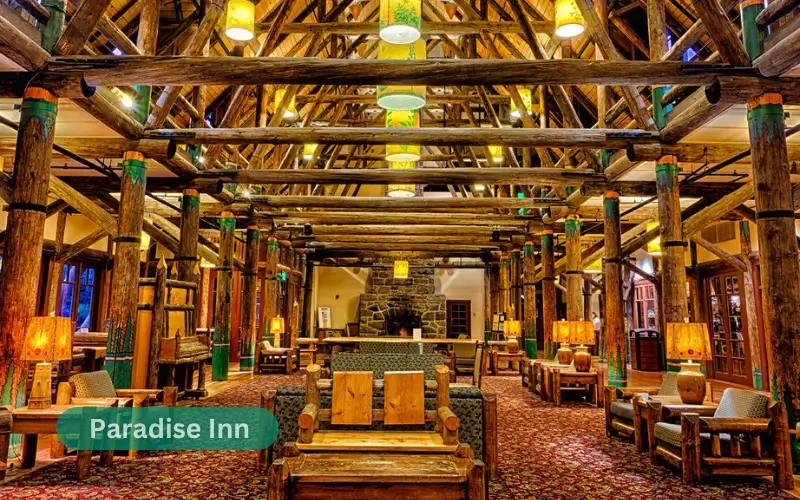
Even if you are not staying overnight, you can visit the inn. Day visitors can see the old building, relax in the lobby by the big stone fireplaces, and buy snacks or drinks. The rustic furniture and cozy feel make you feel like you have stepped back in time.
Paradise Inn connects visitors to the park’s long history. It is a perfect base for exploring the Paradise area and learning about Mount Rainier’s past.
3/ Explore Waterfalls in the Paradise Region
- Four spectacular falls: Myrtle, Narada, Christine, and Comet Falls
- Accessibility: Three falls within walking distance of parking
- Best photography: Early morning or late afternoon light
- Seasonal flow: Peak volume during snowmelt season
- Comet Falls challenge: 3.8-mile hike with 1,250 feet elevation gain
- Two-tiered spectacle: 300-foot upper fall plus lower cascade
- Bonus waterfall: Bloucher Falls along the same trail
The Paradise area has many easy-to-reach waterfalls. It is great for visitors who want to see different falls without long hikes. Myrtle Falls is the most picture-perfect spot. Water falls 60 feet with Mount Rainier standing tall behind it. A paved path, only a quarter mile long, makes it easy for people of all ages.
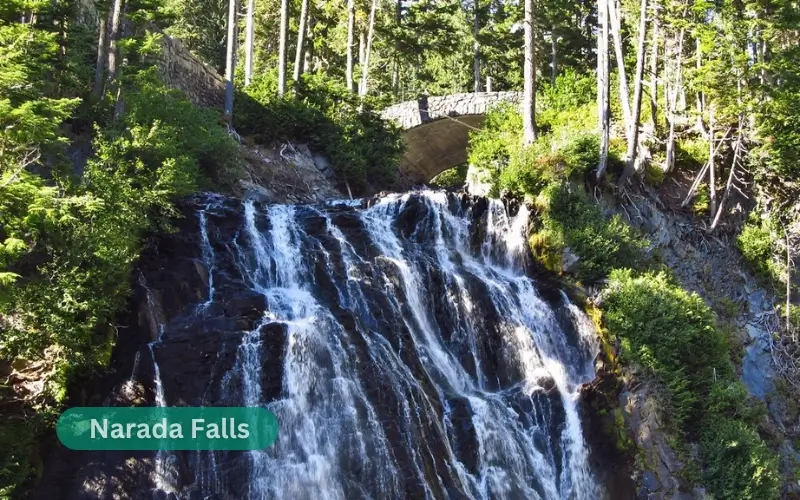
Narada Falls drops 168 feet over rocks. You only need to walk a short way down to see its full strength. Christine Falls is special because a stone bridge frames the waterfall, making it look like a postcard.
These easy-to-visit waterfalls show why Paradise is a great place for first-time visitors to the park.
4/ Discover the Sunrise’s Epic Mountain Viewpoints
- Highest driveable point: Best panoramic perspectives in the park
- Prime hiking hub: Three world-class trails start here
- Wildlife watching: Abundant marmots and mountain goats
- Photography paradise: Unobstructed Rainier views
- Burroughs Mountain: 9-mile adventure to Rainier’s base
- Mount Fremont Lookout: Historic fire tower with sunset views
- Berkeley Park: Wildflower paradise in hidden valley
The Sunrise area is one of the best Mt Rainier National Park viewpoints for its dramatic views. It brings you closer to the mountain’s rough face than any other place you can reach by car. The visitor center is high up at 6,400 feet. From there, you can reach alpine areas and wide, beautiful views.
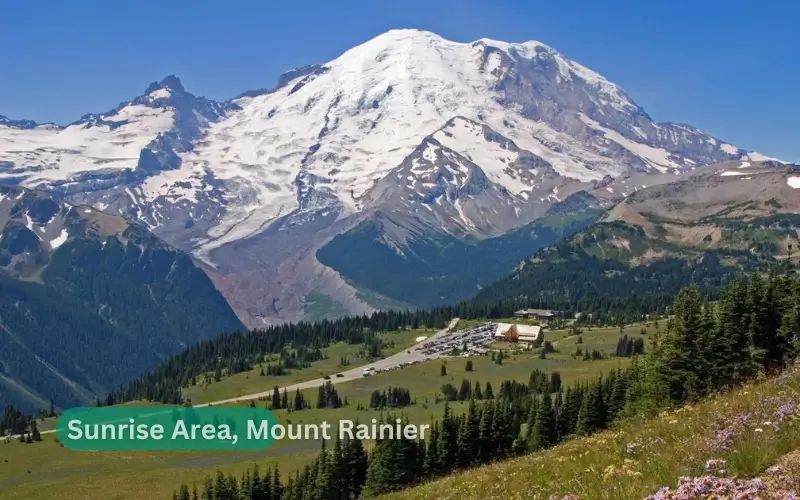
This east side shows Rainier’s strongest shapes and glacier-carved parts. Sourdough Ridge goes from Sunrise Point to Frozen Lake. It offers nonstop views of Seattle’s nearby mountains along its rocky path. Every step gives you new sights of peaks, valleys, and mountain meadows.
The ridge is also the starting place for three great day hikes. Each hike shows a different part of this amazing land. You’ll absolutely love being there.
5/ Visit the Mowich Lake in Mount Rainier National Park
- Access challenge: Long gravel road limits crowds
- Largest lake: Biggest and deepest in the park
- Primitive camping: Walk-in sites available
- Two stellar hikes: Tolmie Peak and Spray Park
Mowich Lake offers the most quiet and wild experience in the park. Visitors who are patient enjoy untouched nature and peacefulness. The rough gravel road keeps crowds small and keeps the area wild. This glacier-shaped valley has some of the best mountain meadows and clear reflections in the water.
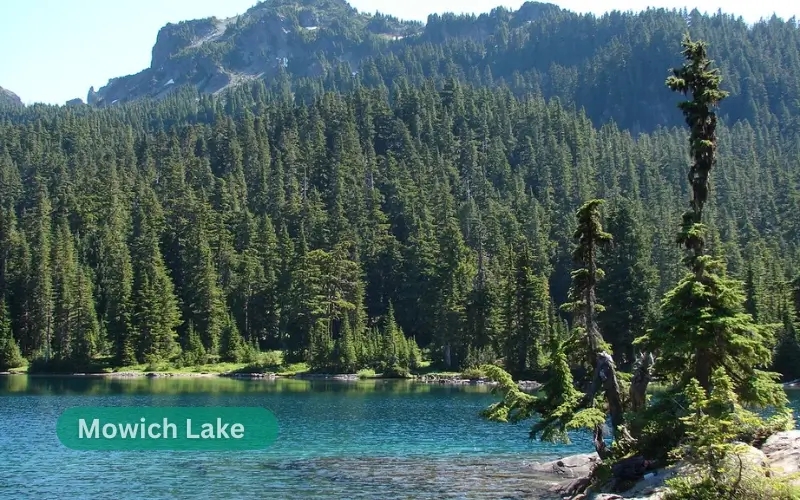
Because it is far away, Mowich Lake gives access to two great hikes;
- Tolmie Peak Fire Lookout
- Spray Park
Tolmie Peak Fire Lookout shows amazing sunset views over Eunice Lake and Rainier’s northwest side. Spray Park has large fields of wildflowers that bloom in late July and early August. These flowers create beautiful natural gardens full of color.
6/ Witness Beautiful Wildflowers at Mount Rainier
- Wildflowers season: Late July through early August typically
- Trail reports: Check Washington Trails Association updates
- Stay on trails: Protect fragile meadow ecosystems
- Variable elevations: Different areas peak at different times
- Top wildflower destinations: Berkeley Park, Sunrise Rim Trail, High Lakes Trail
- Fun facts about Mount Rainier: Over 890 plant species documented
- Photography ethics: Observe from designated trails only
Mount Rainier has some of the most amazing wildflower shows in North America. The mountainsides turn into colorful blankets of flowers. The growing season is short. When the snow melts, many alpine plants start to bloom all at once.
Witnessing beautiful wildflowers is one of the best things to do in Mount Rainier in summer. Purple lupine, Indian paintbrush, and many other flowers create beautiful patterns in nature.
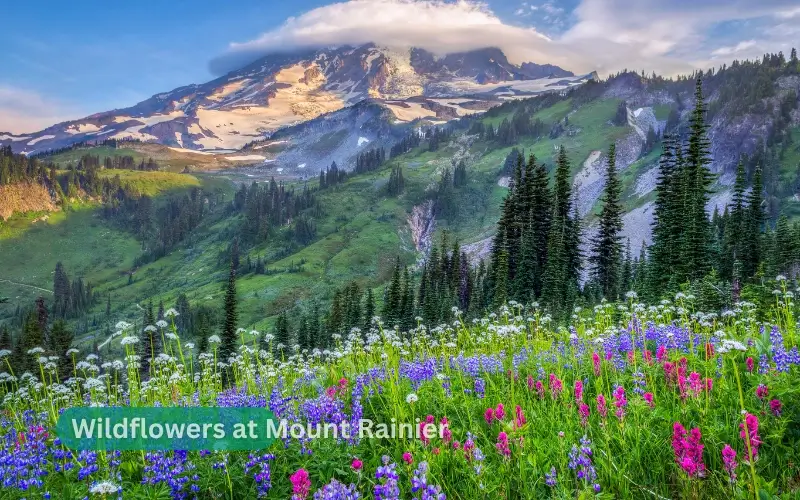
Because of different heights, flowers bloom at different times in the park. Paradise blooms first. Then, a few weeks later, flowers bloom higher up in the Sunrise area. This lets flower lovers enjoy blooms all summer long by moving from one place to another.
7/ Enjoy Winter Activities at Mount Rainier
- Road closures: Sunrise and Mowich Lake inaccessible
- Snow activities: Cross-country skiing and snowshoeing
- Paradise access: Usually maintained year-round
- Visitor centers: Limited winter operations
In winter, Mount Rainier becomes a snowy wonderland. It is perfect for Nordic skiing and snowshoeing. Paradise is the main place to visit in winter. It has groomed trails and beautiful views of snow-covered trees and Rainier’s icy peak.
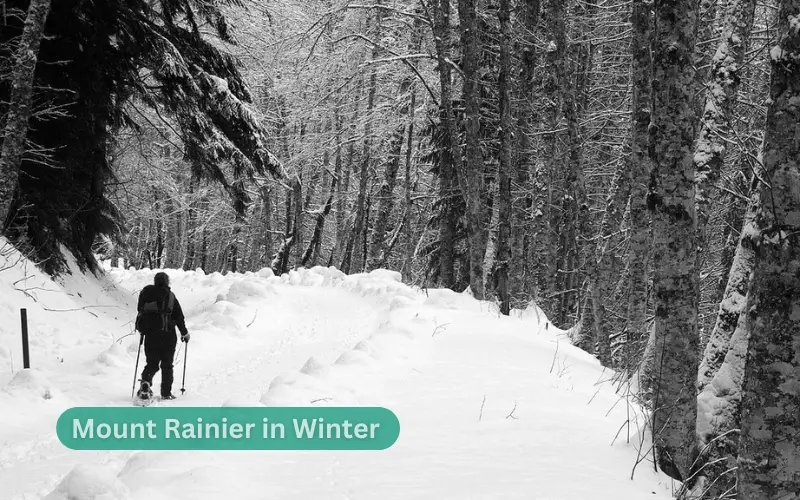
Henry M. Jackson Visitor Center offers a warm place to rest. It also gives information about the best things to do in Mount Rainier in winter. You can rent snowshoes or join guided tours. These help beginners learn how to travel in the snow. Experienced hikers can explore off-trail areas.
Winter shows the park in a new way. Snow-covered forests and clear mountain views create magical moments for those who enjoy the cold.
8/ Photograph Reflection Lakes’ Perfect Mirror Views
- Best photography spot: Famous for Mount Rainier reflections
- Wildflower bonus: Slopes burst with color in summer
- Easy access: Roadside location with ample parking
- Trail connections: High Lakes Trail starts here for wildflower viewing
- Pinnacle Peak Trail: Short climb to elevated viewpoint above the lakes
- Mosquito warning: Bring repellent during early summer months
Reflection Lakes is the most famous spot for photos in Mount Rainier National Park. Here, the snowy peak of Mount Rainier shows a clear mirror image on the lake’s still water. Many people, from beginners to experts, come during sunrise or sunset to get the best reflection pictures.
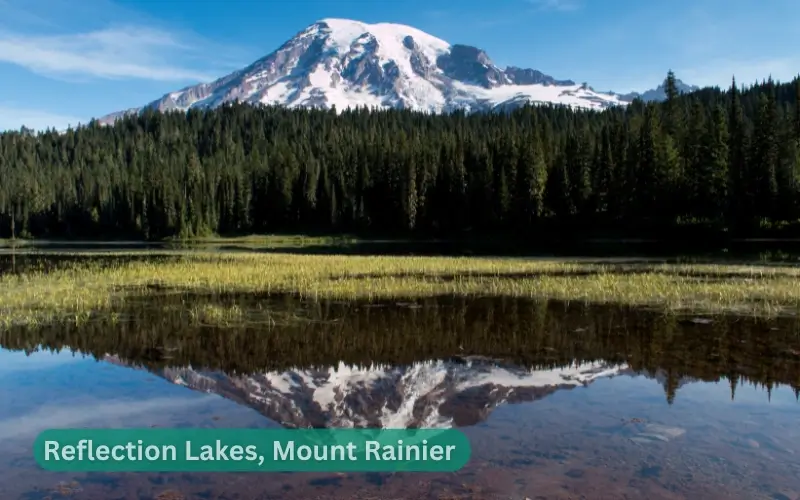
The lakes are right next to Stevens Canyon Road, so you can drive there and not need to hike.The water is calmest in the morning, making the reflection even better before the wind starts.
In summer, wildflowers grow around the lake and add bright colors to your photos. Both sunrise and sunset are good times for pictures, but each gives the lake a different look and feel.
9/ Discover Bench and Snow Lakes’ Hidden Beauty
- Distance: 2.5 miles roundtrip with 600 feet elevation gain
- Difficulty: Easy family-friendly hike
- Two distinct lakes: Different character and mountain views
- Underrated gem: Less crowded than popular trails
Bench and Snow Lakes are two hidden gems along Stevens Canyon Road. The hike is short and not too hard, making it great for families or anyone wanting pretty views without a tough climb.
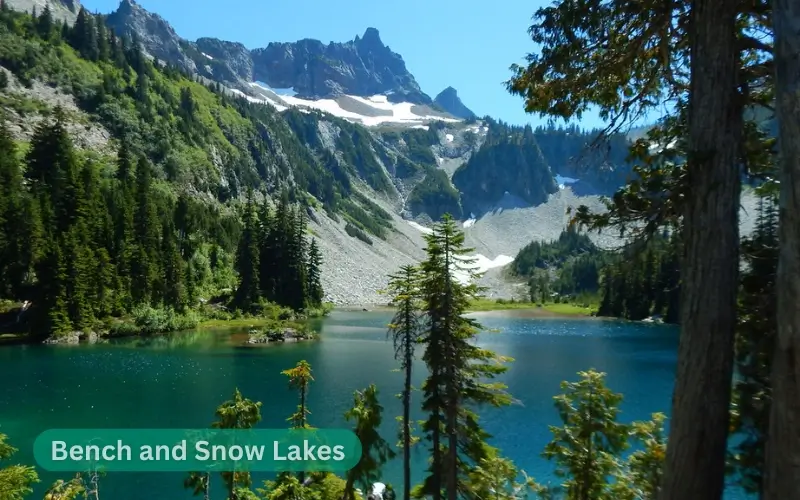
The trail goes up and down gentle hills. After about three-quarters of a mile, you reach Bench Lake. On clear days, you can see Mount Rainier reflected in the water. In summer, wildflowers and beargrass fill the area with color.
Keep walking another half mile to reach Snow Lake. This lake sits in a rocky bowl with tall peaks around it. You can camp here if you get a permit, and there are nice spots to see the lake and mountains.
The path between the lakes gives some of the best views of Mount Rainier and the Tatoosh Range. Many people skip this trail, so it is often quiet and peaceful, perfect for a real nature experience without crowds.
10/ Explore Ohanapecosh’s Ancient Forest
- Ecosystem focus: Old-growth temperate rainforest experience
- Family activities: Grove of the Patriarchs and Silver Falls trails
- Central location: Perfect base camp between Paradise and Sunrise
- Visitor services: Large campground and visitor center available
- Grove of the Patriarchs: Currently closed due to bridge damage
- Town proximity: Packwood offers dining and supply options nearby
- Camping advantage: Less competitive reservations than other park areas
- Educational programs: Ranger-led forest ecology walks available
The Ohanapecosh area offers a very different Mount Rainier experience. Instead of high mountain views and meadows, you walk through thick, old forests.
This part of the park is in the southeast and shows the rich variety of plants and animals found in Pacific Northwest forests. The tall, old trees feel like a natural cathedral, perfect for quiet walks and reflection.
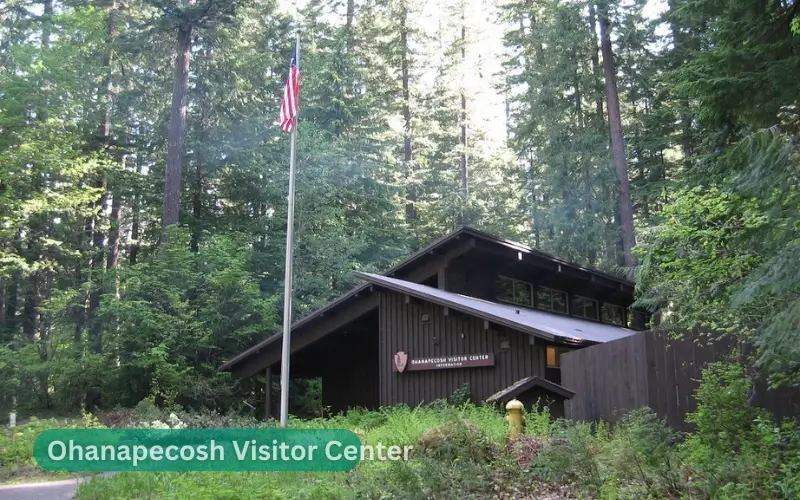
The Silver Falls Trail is a simple loop through this forest. It follows the clear Ohanapecosh River to a pretty waterfall. The falls are surrounded by mossy rocks and tall pine trees. The trail is easy and good for all ages. Along the way, you can learn about the forest and the plants that grow there.
11/ Drive the Beautiful Scenic Roads
- Stevens Canyon Road: Dramatic canyon and waterfall views
- Paradise Valley Road: Classic mountain approach with multiple stops
- Sunrise Road: Highest paved road in Washington State
- Photo opportunities: Countless pullouts and scenic overlooks
Mount Rainier’s scenic roads are attractions on their own. They wind through many different natural areas. From your car, you see the mountain from many changing views. These roads show the park’s variety, from thick forests to high mountain zones. Each road offers special sights depending on the season and great chances for photos.
Stevens Canyon Road is very dramatic, cuts through narrow canyon walls and shows hidden waterfalls. You can catch glimpses of Mount Rainier through breaks in the trees. Building this road was a big challenge, adding history to your drive. There are many spots to pull over safely and enjoy the views.
Paradise Valley Road is the classic way to approach Mount Rainier. The mountain looks bigger with every mile you drive. This road passes several waterfalls and leads to many hiking trailheads. It is perfect for a day of both driving and hiking..
12/ Experience Tipsoo Lake’s Sunrise Magic
- Location: Convenient roadside access near Sunrise entrance
- Best timing: Early morning for optimal lighting
- Photography tips: Multiple vantage points available
- Bonus hike: Naches Peak Loop starts here
Tipsoo Lake is one of the best places to watch the sunrise in Mount Rainier National Park. In the morning, sunlight makes Mount Rainier glow with bright colors. If you stand on the road above the lake, you can see the mountain turn pink, orange, and gold as the sun comes up.
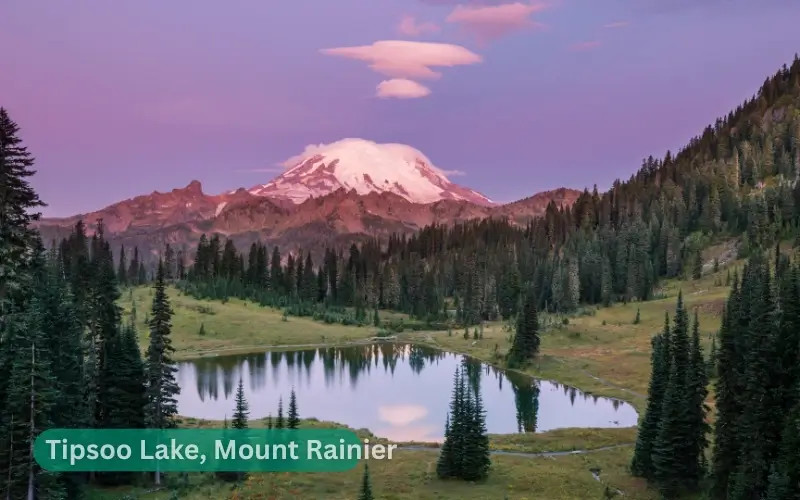
On calm days, the lake acts like a mirror and shows a double image of the mountain.
In summer, the fields around the lake fill with wildflowers, adding lots of color to your photos. And this makes it one of the top things to do in Mount Rainier in summer. You do not need to hike to see these views, so it is easy for everyone to visit.
If you want to explore more, the Naches Peak Loop trail starts nearby. This trail gives you more chances to see Mount Rainier and walk along part of the Pacific Crest Trail.
13/ Join Ranger-Led Educational Programs
- Guided walks: Expert interpretation of natural and cultural history
- Evening programs: Campfire talks and star-gazing sessions
- Specialized tours: Wildflower walks and geology programs
- Free participation: Included with park admission
Ranger-led programs help you learn more about Mount Rainier. They explain the park’s plants, animals, rocks, and history. These programs make your visit more meaningful. Friendly rangers guide small groups to special places that many visitors miss.
In the evenings, campfire programs are very popular. Around a warm fire, rangers tell stories about the mountain’s volcanic past, animals, and efforts to protect the park. When the sky is clear, you may also look at stars and planets through telescopes.
There are special programs for different seasons. You can learn about wildflowers, birds, or rocks. Rangers change the topics based on the season and what the group wants to know. Some programs go to places that are hard to reach on your own.
FAQs for Mount Rainier Things to Do
Let me answer a few questions most people ask about the park.
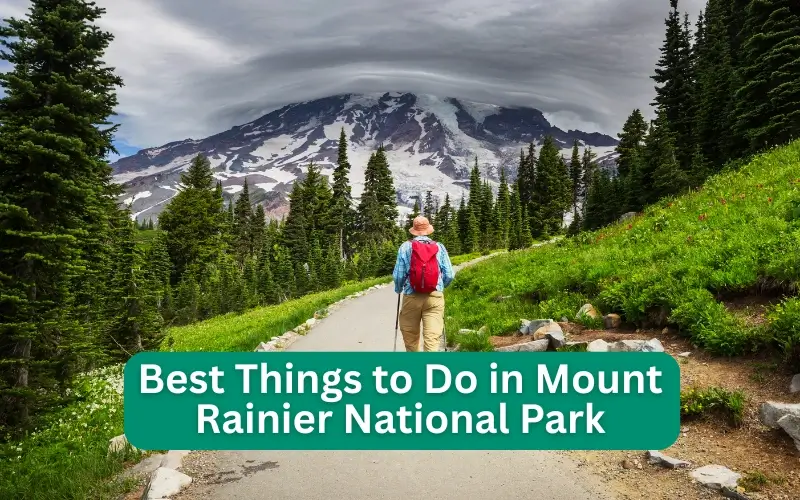
Why is Mount Rainier National Park important to protect?
Mount Rainier National Park is important to protect because it preserves unique glacial and volcanic landscapes. These landscapes shape the environment and support diverse ecosystems. The park is the source of clean water for the Puget Sound region. It plays a critical role in sustaining natural habitats and human communities.
Mount Rainier National Park offers valuable recreational and wilderness experiences. It also safeguards cultural heritage. Also, it provides a living laboratory for scientific study. Protecting the park helps mitigate climate change impacts. This is done by preserving vital natural processes and ecosystems.
How many days in Mount Rainier National Park are enough?
Due to the park’s large size and vast array of attractions, you should spend at least 3 days in Mount Rainier National Park. With 3 days or more, you can fully explore the park’s highlights and enjoy some hiking without feeling rushed.
2 days can cover the main areas like Sunrise and Paradise. But a third day allows exploration of quieter sections or additional trails. For avid hikers or those wanting a more leisurely pace.
4 days or more is ideal, providing time for scenic drives, lakes, waterfalls, and contingency for weather changes. Some visitors even spend up to a week to fully experience the park’s diversity.

How to spend one day in Mount Rainier National Park?
With only one day in Mt Rainier, focus on one or two key regions such as Paradise or Sunrise to maximize your experience. Both areas offer spectacular views and hiking options. A one-day itinerary for Mount Rainier National Park will be packed but can include short hikes, scenic viewpoints, and visitor centers in these popular zones.
Efficient planning and good weather are essential to make the most of a day trip, typically from Seattle or nearby cities. Driving between park regions can take considerable time, so limiting your visit to one or two areas is practical.
How to spend 3-4 days in Mount Rainier National Park?
A 3-4 day itinerary for Mount Rainier National Park allows you to explore the main highlights:
- One day each at Sunrise and Paradise
- Other days at less-visited areas like Carbon River or Ohanapecosh.
This gives time for multiple hikes, enjoying wildflower meadows, scenic drives, visitor centers, waterfalls, old-growth forests, and subalpine lakes. Extra days also provide flexibility for weather delays and a more relaxed pace to fully appreciate the park’s natural beauty.
Are dogs allowed on Mt Rainier?
No, dogs are not allowed on trails in Mount Rainier National Park, according to the National Park Service. But they are allowed on paved roads, parking lots, and campgrounds within the park (not on trails, in wilderness areas, or in buildings).
Dogs must be on a leash no longer than six feet and under their owner’s control at all times. Owners must clean up and properly dispose of pet waste. Service animals are exempt from these restrictions. Pets are not allowed inside buildings or on non-PCT trails. Visitors should bring all pet supplies, as no kennel facilities exist in the park.
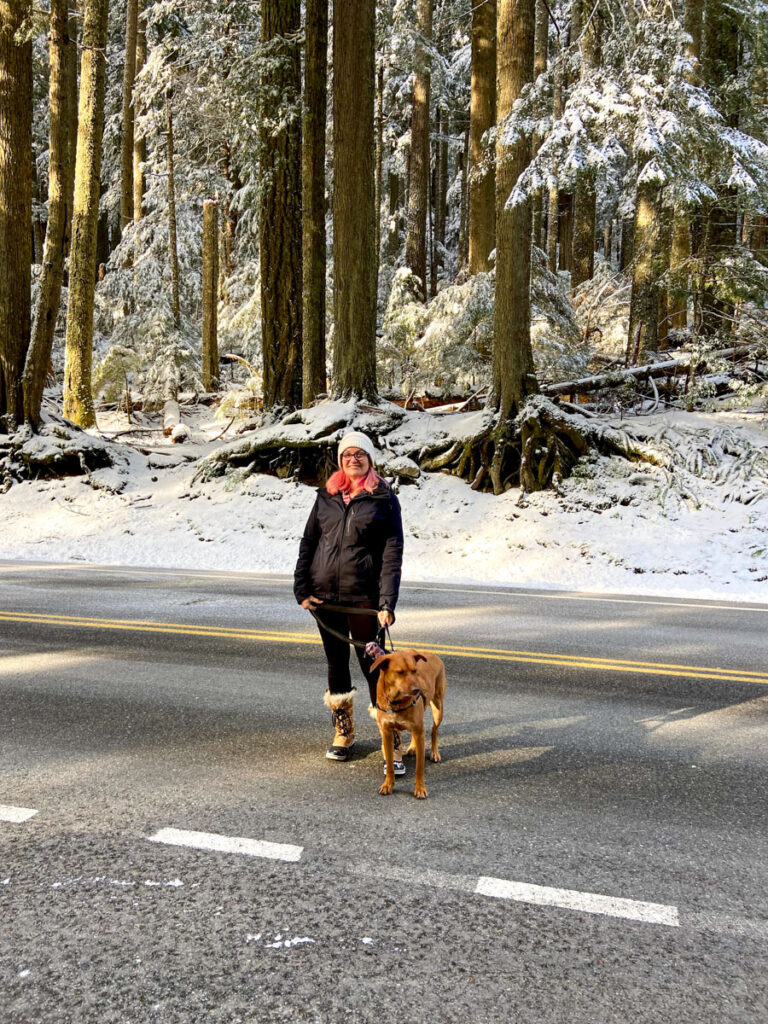
What city is Mount Rainier National Park in?
Mount Rainier National Park is not inside a single city. It spans Pierce and Lewis Counties in Washington state. Several gateway communities surround the park. These towns provide access and services.
Ashford is a key gateway town, particularly for the Nisqually Entrance, the only year-round park entrance. Other gateway towns include Enumclaw, Packwood, and Wilkeson that offer access to different parts of the park.

